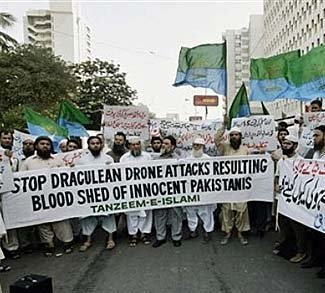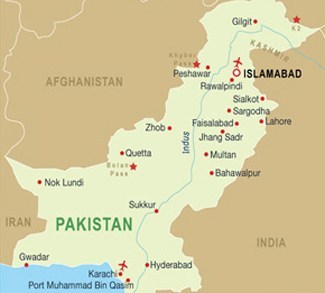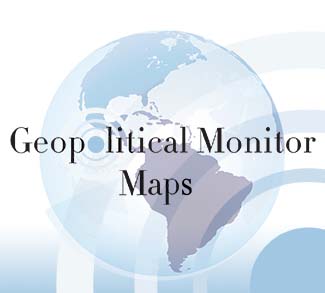Summary
Recent drone attacks in North and South Waziristan can mean one of two things: either the Pakistan government is collaborating with the U.S. government in a new push against Taliban militants in Pakistan, or the U.S. government is continuing to ignore Pakistani grievances. Either way, drone attacks harm the prospect of reigning in militancy in Pakistan’s tribal regions.
Analysis
According to the BBC, U.S. drone attacks have zeroed in on areas controlled by Baitullah Mehsud’s TTP, the Pakistan Taliban’s umbrella organization that is thought to be behind the 2007 Benazir Bhutto assassination. It is possible that the targeting of Mehsud is the result of U.S.-Pakistani collaboration, for it coincides with the Pakistani government’s moves to arrest another prominent Islamist leader, Sufi Muhammad.
It is however more likely that the U.S. government is merely continuing the Bush-era policy of launching extra-territorial strikes without warning.
Regardless of whether or not there is collaboration, the Pakistani government is under massive pressure to distance itself from the U.S. strikes. Islamabad has been enjoying a surge in popular support for the fight against Taliban militancy and has in turn used this window of opportunity to launch a military campaign in Swat. U.S. drone attacks on Pakistani territory not only jeopardize the government’s precarious support, but also continue to alienate critical tribal populations along the Pak-Afghan border.
It is becoming increasingly clear that any successful dismantling of the militant nexus along the Pak-Afghan border is going to have to take into account tribal populations living on both sides. Taliban soldiers fleeing Afghanistan after 2001 were able to find refuge with their ethnically Pashtun brethren in the Pakistan tribal areas, nevertheless, tribal support for Islamic militant groups is not a foregone conclusion. If drone attacks are halted and the Pakistani government is able to make political inroads in the FATA, tribal populations may shift their support away from Taliban-affiliated groups, effectively removing their ability to move seamlessly across the border.
However, the Pakistani government’s ability to make these kinds of inroads is still compromised by a variety of internal factors. Taliban support within the ISI, whether based on religion or geopolitical considerations, continues to undermine Islamabad. To some, it is better to have a Taliban-controlled Afghanistan because it provides a hedge against creeping influence from Pakistan’s conventional enemy, India.
Narcotics also continue to be a bane for the Pakistani government. Opium production in Afghanistan reached a record level of 8,200 tons in 2007-2008. Rampant drug production in Afghanistan is not only further weakening an already delicate Pakistani government by funding the Taliban and fueling corruption, but is also creating a drug abuse problem in Pakistan, which now boasts an addiction rate that is almost twice the world average.
Like Pakistan’s past abortive military campaigns in the FATA, U.S. drone attacks only inflame local opinion in a way that is counter-productive to long-term stability. With rumors swirling that the Pakistani government is about to open a new front against militants in South Waziristan, Islamabad’s relations with tribal populations in the FATA are even more important.
If the Pakistani government can move in behind the military and re-establish a writ in South Waziristan that is based on the support of tribal populations, then Pakistan’s Taliban groups may find themselves more and more restricted in their range of movement. If not, and Islamabad continues to have nothing to offer tribal populations but loss of life, then militants will be quick to re-establish a territorial base in the FATA after the Pakistani military departs.




